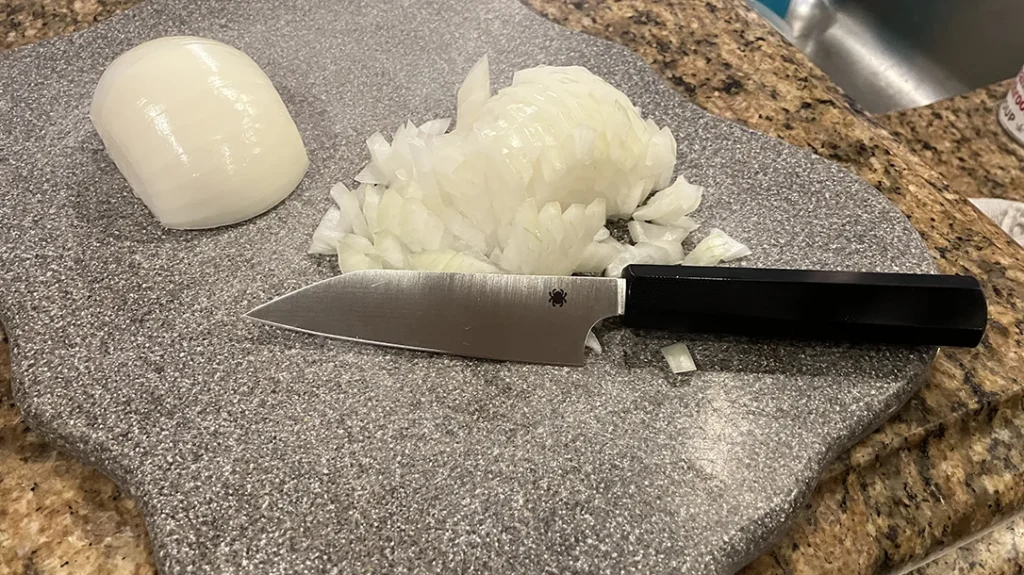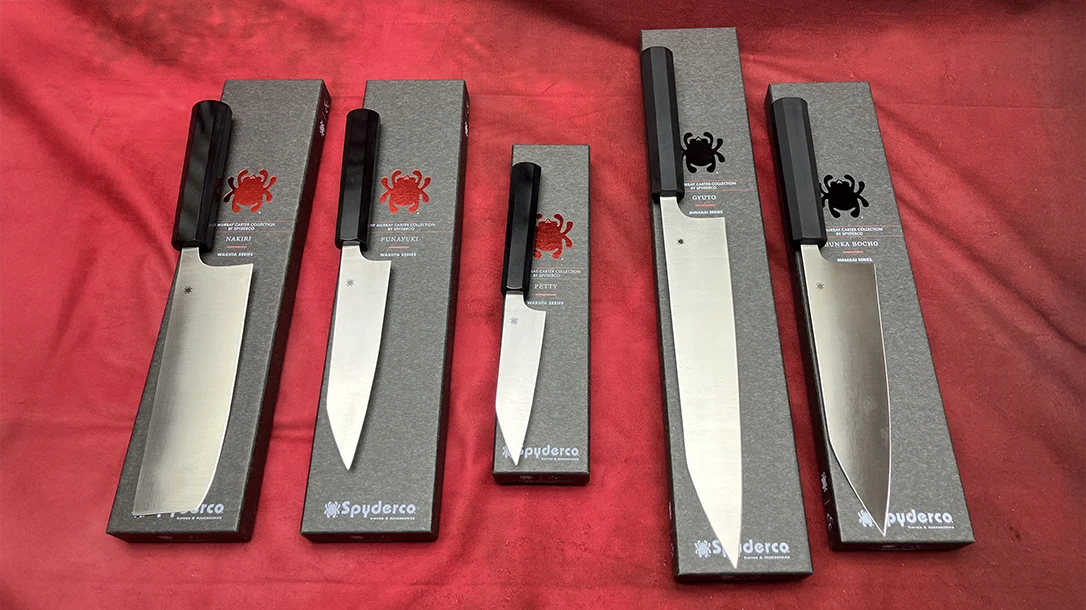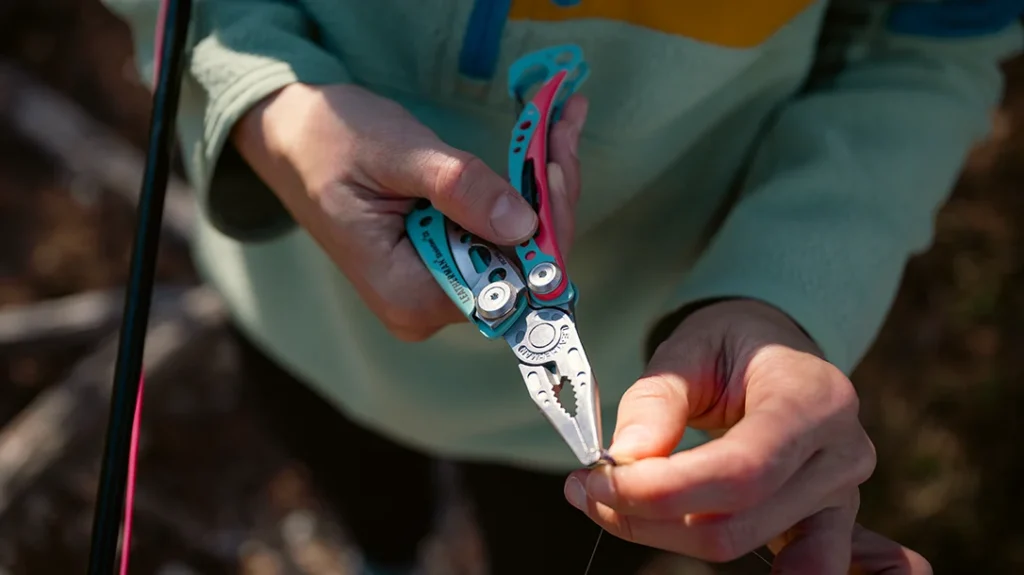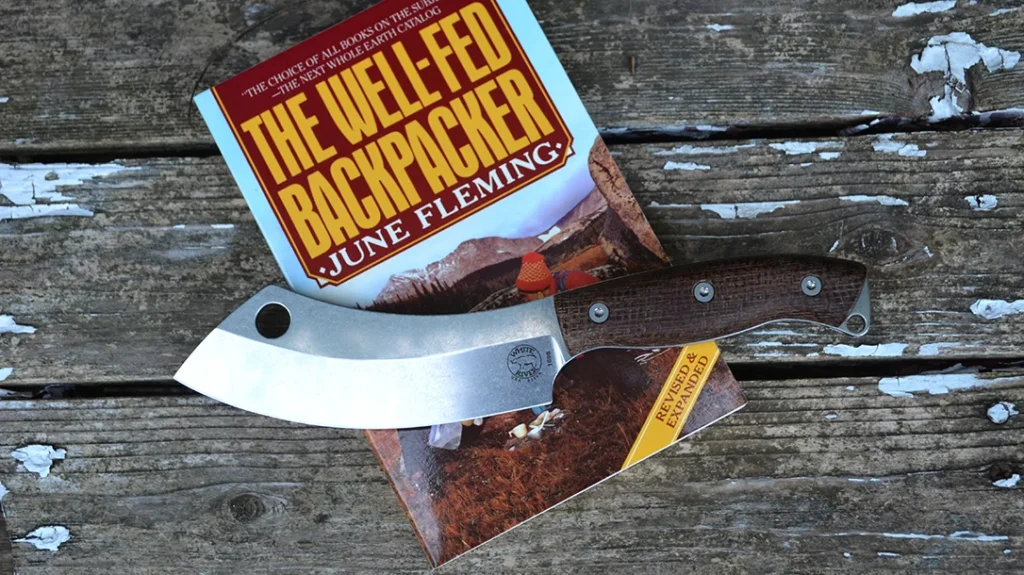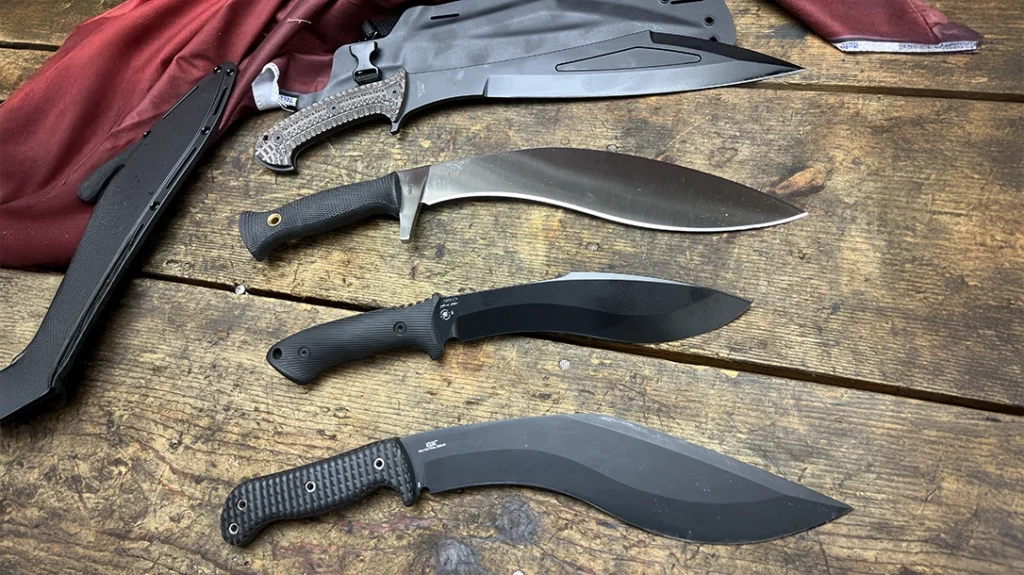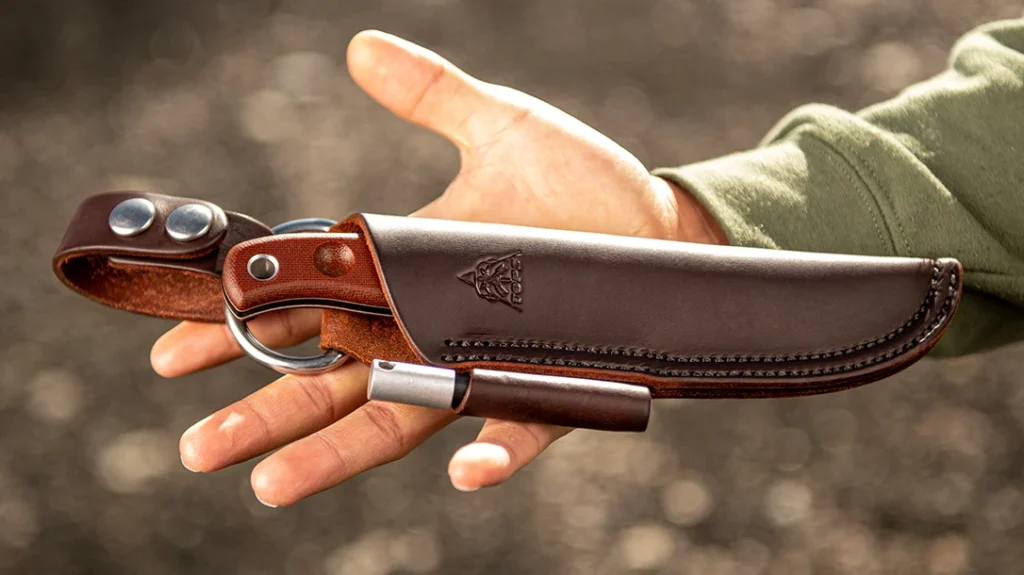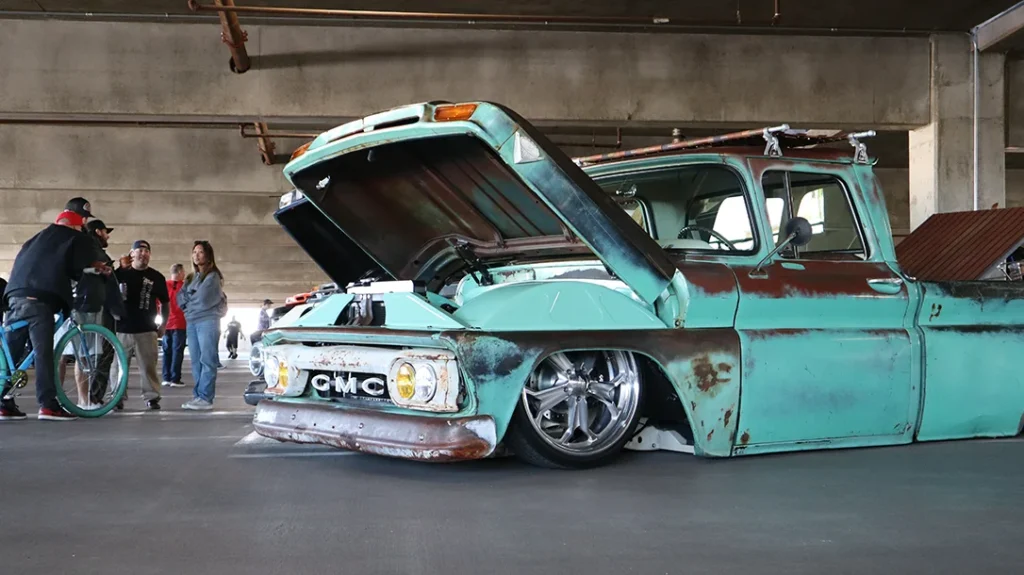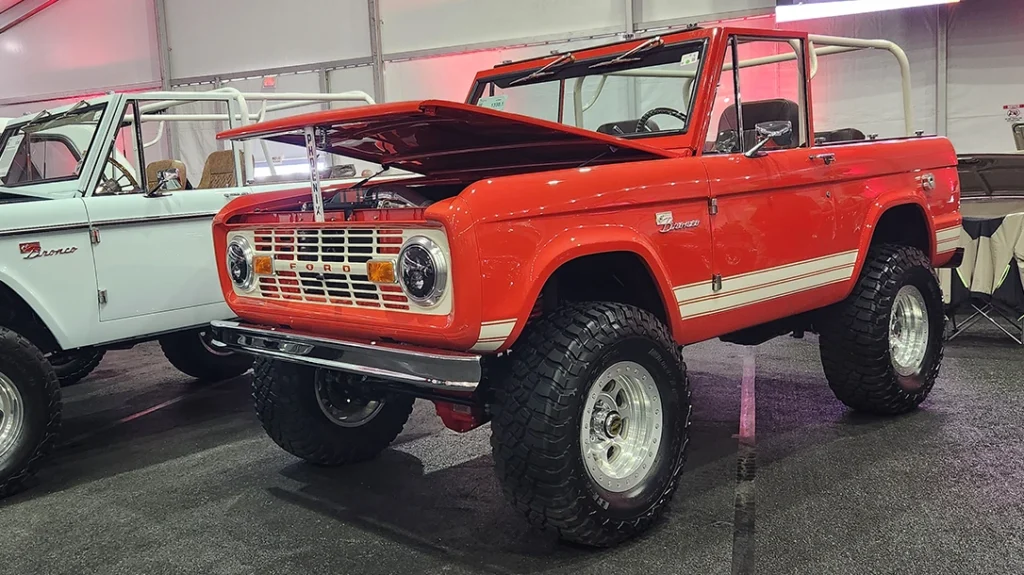From time to time, we need to depend on subject matter experts for recommendations and guidance. This approach assists in increasing skill sets and knowledge as quickly as possible. One of the places I look to stay informed and “up to speed” on most things blade-oriented is Spyderco. Culinary blades are an admitted weak spot in my knowledge base. However, my interest has peaked lately. My time in the kitchen has increased due to empty nesting, which creates much more available time. What better set to kick off my culinary journey than the Spyderco Murray Carter Collection culinary knives?
The Spyderco Murray Carter Collection
The Spyderco Murray Carter Collection culinary knives caught my attention with their distinctive Japanese design and background story. At only 18, Murray Carter began an apprenticeship in Japan under Sensei Yasuyuki Sakemoto. Sakemoto was heir to a 16-generation lineage (420 years) of Japanese bladesmiths, stretching back to the era of the Samurai.
After a six-year apprenticeship, Murray Carter worked for 12 years as a village bladesmith in Japan. Though Murray is a prolific custom knife maker, there is no way his custom methods could meet consumer demands. Fortunately, his collaboration with Spyderco allows access to his vision of Japanese cutlery.
Advertisement — Continue Reading Below
Spyderco offers five blade patterns in the Murray Carter Collection of signature Japanese kitchen knives.
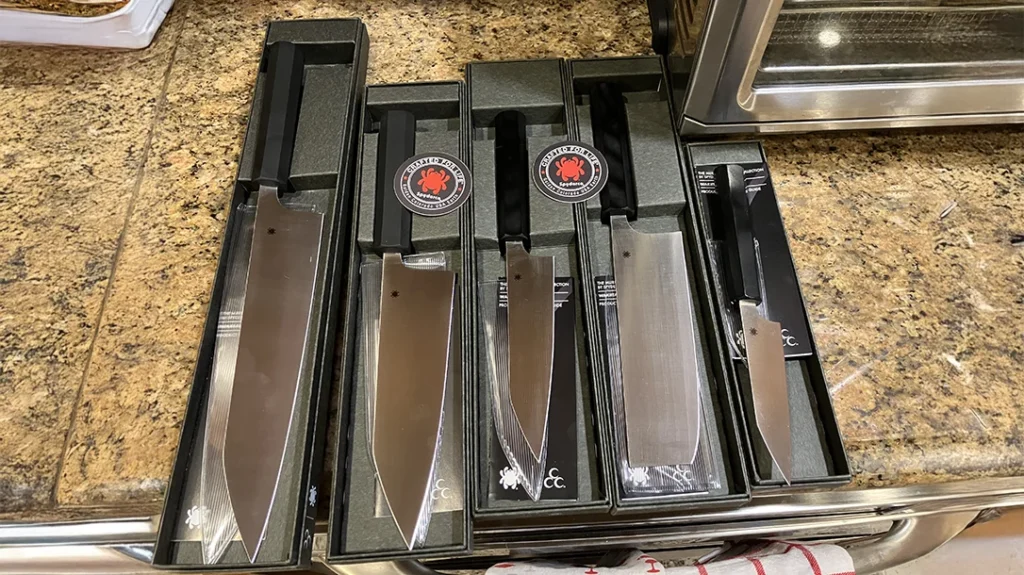
The Petty is the smallest Murray Carter blade. It can be compared to a Western-style paring knife for peeling and slicing vegetables/fruits. The Funayuki, which translates to “ship going,” is a general kitchen tool used for draw-cutting and chopping. The Nakiri translates to “vegetable cutter.”
Advertisement — Continue Reading Below
Despite the Nakiri’s appearance, it is NOT a cleaver. Rather, its unique rectangular shape is for push-cutting vegetables during meal prep.
Next up is the Bunka Bocho, which translates to “cultural knife” and is most likely the knife form found in Japanese kitchens for preparing their traditional cuisine. The Bunka Bocho’s acute point gives it utilitarian functioning.
Last is the Gyuto, meaning “cow blade.” It is the Japanese equivalent of the Western chef’s knife for slicing, carving, and chopping while still maintaining the ability for detailed food prep duties.
Advertisement — Continue Reading Below
Japanese Craftsmanship
Spyderco produces the Murray Carter Collection in Japan, leveraging its relations there. Each of the Murray Carter blade styles is offered in one of the three different series. This provides consumers with options based on budget.
In ascending order, these are—Minarai, Wakiita, and Itamae. Each is distinguished by different handle materials and/or the steel used in construction.
The Minarai and Wakiita each use CTS BD1N high-carbon, nitrogen-enriched stainless steel. However, their classic Japanese octagonal “wa-style” handles are made from different materials. The Minarai is made from injection-molded polypropylene, and the Wakiita uses polished G10 material.
Advertisement — Continue Reading Below
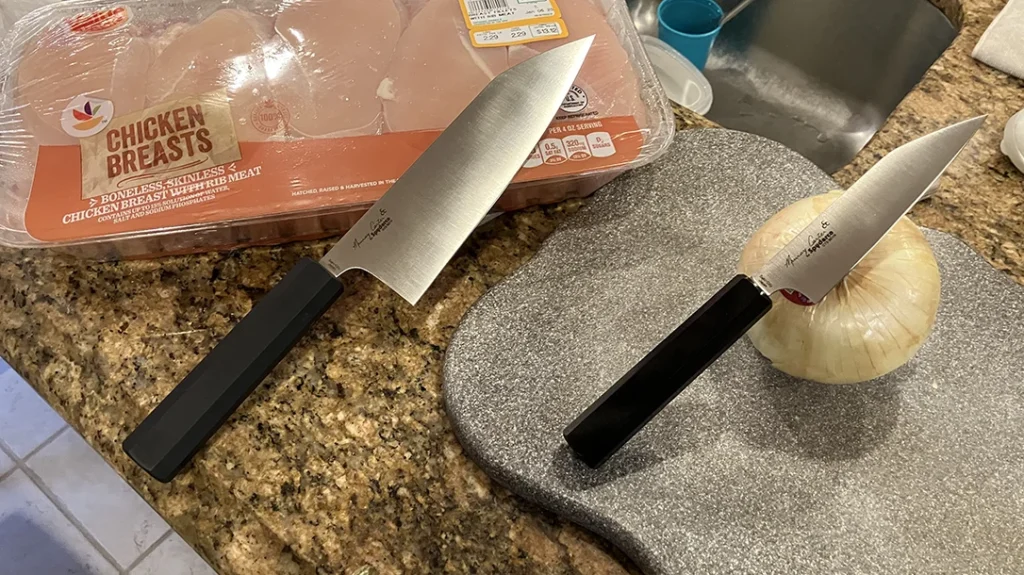
The top-tier Itamae-series uses san mai layered construction with an Aogami Super Blue tool steel core clad between layers of SUS410 stainless steel. This three-layer san mai construction allows the outer layers to protect and support the thin ultra-hard carbon-steel center layer that forms the blade’s precisely honed edge.
The Itamae’s premium steel is combined with a burl-style G-10 “wa” handle with a wood grain aesthetic.
Advertisement — Continue Reading Below
The Murray Carter Collection: In the Kitchen
I was fortunate to handle each of the five Murray Carter Collection blade styles in the Minarai or Wakiita series. My impressions were indubitable when unboxing and then using Spyderco blades in the kitchen.
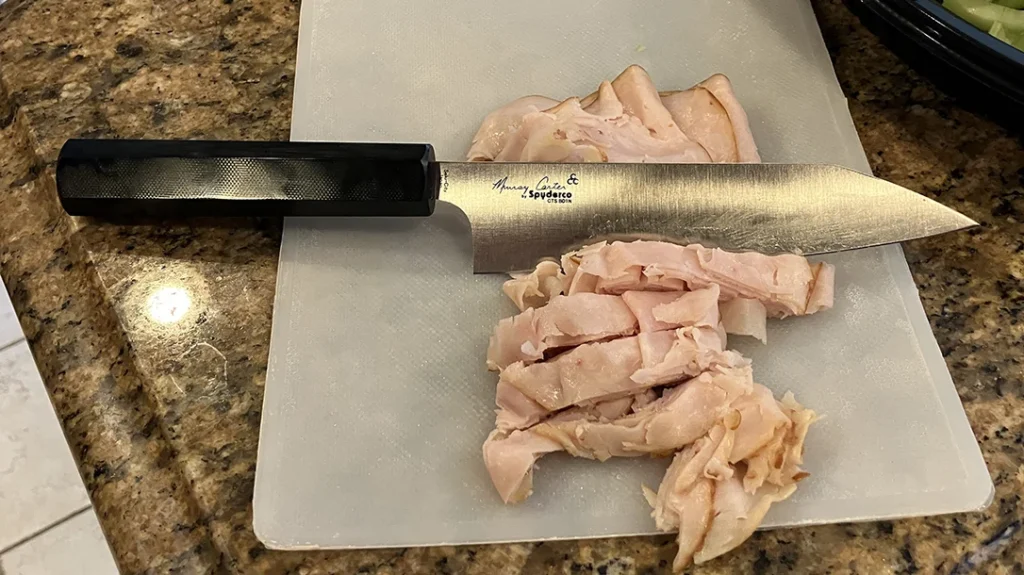
First off was how light the blades felt in the hand. A close second was how damn sharp and fine the blade edges were. Vegetables were peeled, sliced, and diced. Various meat such as chicken, beef, and venison was prepped for the slow cooker, stir fry, and/or dehydrator.
Advertisement — Continue Reading Below
I urge caution and diligence for novice chefs, like myself, when first exposed to the advantages of high-performance culinary blades. Mind where those fingers/digits are and resist the temptation to start slicing and dicing like you witness at your local hibachi or see on TV watching professional chefs’ work.
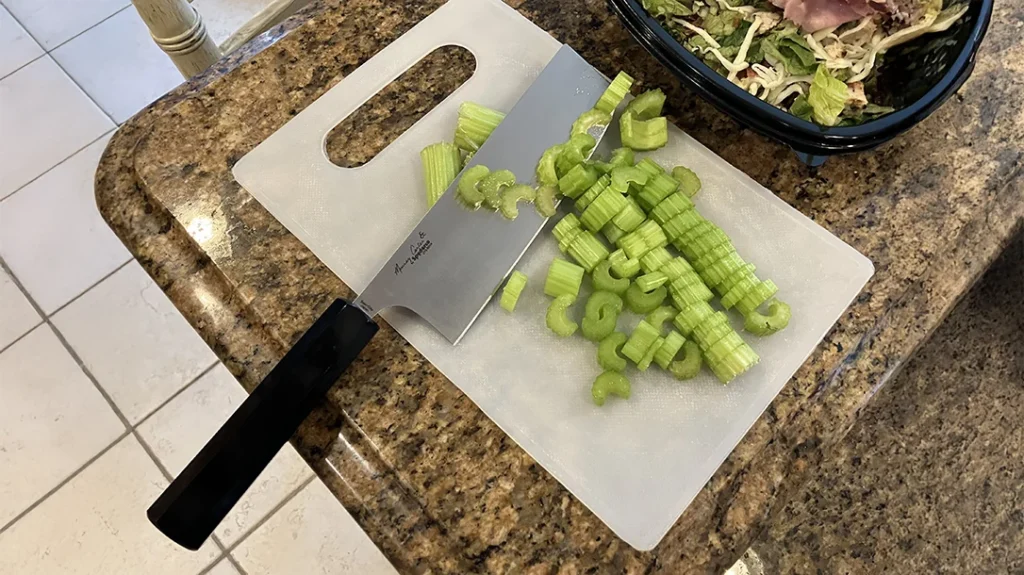
No, I did not cut myself. However, the easy control and fine, sharp-edge performance of the Spyderco blades found in the Murray Carter Collection will be a revelation. You won’t go back to your old kitchen knives.
Advertisement — Continue Reading Below
Spyderco Changes the Culinary Game
In closing, I will leave the reader with the following pieces of advice. If you are pondering enhancing your kitchen “game” with new tools….do it! You don’t know what you are missing by using blades not designed for culinary duty or working in the kitchen.
The Spyderco Murray Carter blades are no doubt worth the investment. You will be amazed at how efficient and how food prep is eased with knives like these.
Lastly, go ahead and pick up a sharpener so your blade edges can be maintained for peak efficiency. No dull knives are allowed in the kitchen!
Advertisement — Continue Reading Below
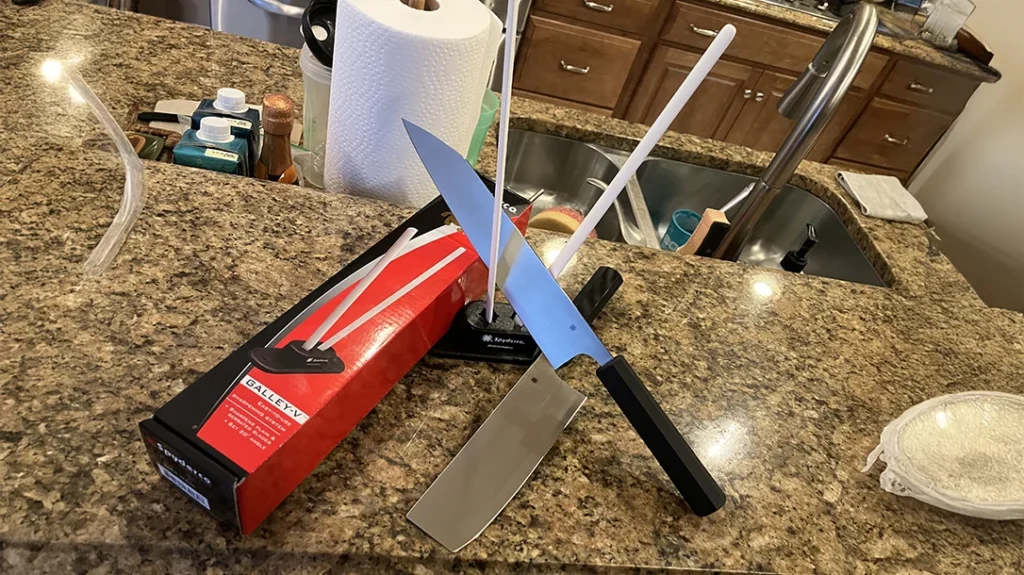
The Spyderco Galley-V sharpener allows for intuitive edge maintenance. Its base is designed to be clamped or anchored on a countertop or cutting board. Placing the long ceramic rods at a 10-degree angle per side can easily “touch up” the thin, keen edges of your Spyderco Murray Carter knives.
You will be looking for things to cut once you experience the Spyderco Murray Carter Collection.
